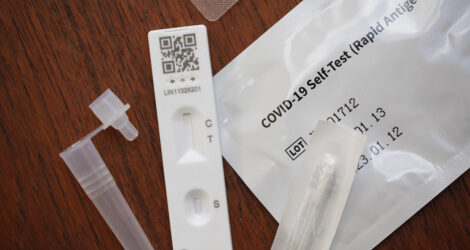Top 3 Best Practices for Healthcare Communications Frequency

The number one question I have been asked over the last 15 years is, “how often do consumers really want to hear from us?” The answer is always going to be a giant “it depends” as there is wild variation in healthcare. However, there are some overarching best practices to consider when we make recommendations.
Here are the top three guidelines to consider when thinking about communications frequency in healthcare outreach:
1. Context: Taking the context of communications into account is key in determining how much and how often to reach out. If a member is newly diagnosed, that member is much more likely to open an email regarding his or her health and is more likely to engage with more communications. The more serious the diagnosis, the more involved the member may want to be. For instance, if a member is diagnosed with colorectal cancer and his or her doctor wanted to reach out every day, that might be welcomed - at least at first. Conversely, if a member is healthy and their health plan sent communications out every month, that could even be too much.
2. Value: The next guideline to consider is the value of the outreach. If it’s valuable information to the member, it can be sent out more frequently. However valuable to one person is not necessarily valuable to another. This is where personalization comes in. For example, if the communication is about closing gaps in care, the outreach needs to be personalized to the gaps missed for each member. If the outreach is about medication adherence, name each member’s specific prescriptions for refill. If you’d like to notify your members of a benefit change, make sure they qualify for that benefit. It seems like common sense, but when conducting communications evaluations, we’ve seen instances where members received a pregnancy communication after hysterectomy. Personalization ensures the recipient will be engaged with the right message given their unique circumstances.
3. Purpose: The last guideline to incorporate in outreach planning is the purpose of the communications. There are two types of communications – informational and action oriented. Action oriented is simply driving members to do something such as complete a survey. The purpose of the communication will inform the frequency. Here are the differences in communications frequency for each instance:
Informational
When health entities send informational communications out and are not trying to get a member to do something, a once-a-month cadence, as long as it’s valuable information, i.e., personalized to them, makes sense. Members have been trained by the retail industry to expect a once-a-month cadence of informational or promotional emails.
Action Oriented
When driving members to take an action like enroll in a program for instance, three to four outreaches sent in proximity drives better results than fewer, less frequent outreaches. There are always exceptions, but here are a few more high-level guiding principles when sending out communications for an action-oriented outreach:
- If using just one channel, the total number of outreaches should be three unless your target is commercial males or the Medicaid population and then adding one more outreach to a total of four yields incremental response. But each message must be unique and integrated to the other touches or it will feel annoying to the consumer.
- If the channel is text or email, the outreach should be sent every other day
- If the channel is direct mail, the outreach should be sent every two and a half to three weeks to account for the time it takes for mail to be sent, received, and opened
- If mixing channels, keep the total amount of outreaches to four
- When mixing email and text channels, it’s best to alternate email and text every other day
- When mixing IVR and direct mail, add an IVR call within a few days of sending direct mail
- If mixing more channels together, make sure to always alternate channels and use more technology channels than direct mail as they can be sent closer together
It may seem counterintuitive to send outreaches so close together but when they are personalized, valuable, and driving an action, this is a good guiding principle as there will be a sense of urgency for the member when receiving messages in a short time frame. We have seen this concept work in practice. For instance, there was a 50% response increase in a medication adherence program when an automated call was added just three days after a printed letter.
Of course, there are always caveats to consider and every communications program and population is different. From our healthcare experience and insights gained reaching millions of members through communications programs, this is a great starting point.


